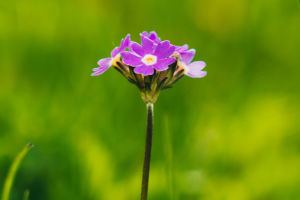Dear Lykkers! Myosotis, commonly known as the "Forget-Me-Not," is a delicate and enchanting flower that captures hearts with its dainty blue petals and sweet symbolism.
With its distinctive appearance and rich historical associations, the Myosotis has become a favorite among gardeners, romantics, and flower enthusiasts alike.
Let’s explore the fascinating world of this charming flower, its varieties, cultural significance, and how to care for it in your garden.
What is Myosotis?
Myosotis, a genus in the Boraginaceae family, comprises around 100 species of flowering plants. The name “Myosotis” is derived from Greek, meaning "mouse's ear," which refers to the shape of its leaves. These small, herbaceous plants are known for their clusters of tiny, five-petaled flowers that are most commonly blue but can also be found in pink, white, and yellow. Native to Europe and Asia, the Myosotis has spread across the globe and can thrive in a variety of climates.
Varieties of Myosotis
1. Myosotis sylvatica (Wood Forget-Me-Not)
The Wood Forget-Me-Not is one of the most popular varieties and is often found in gardens and parks. It has soft, hairy leaves and bright blue flowers with a yellow or white eye. This variety is a biennial or short-lived perennial and prefers partial shade with moist, well-drained soil.
2. Myosotis scorpioides (True Forget-Me-Not)
Also known as the True or Water Forget-Me-Not, this species thrives in damp environments, such as along stream banks and ponds. It has slightly larger flowers than other varieties, typically in shades of blue, pink, or white. This perennial is perfect for adding a splash of color to water gardens.
3. Myosotis alpestris (Alpine Forget-Me-Not)
The Alpine Forget-Me-Not is a hardy variety that is often found in alpine and subalpine regions. It features small, intense blue flowers and is the state flower of Alaska. Its resilience makes it ideal for rock gardens or as a border plant in cooler climates.
Cultural Significance and Symbolism
Forget-Me-Nots have a rich cultural and historical significance, often associated with love, remembrance, and loyalty. The flower's name originates from a medieval legend in which a knight, while picking these flowers for his lady, was swept away by a river. As he was carried away, he threw the bouquet to her and cried, "Forget-me-not!" Since then, the flower has been a symbol of enduring love and memory.
In addition to its romantic connotations, the Forget-Me-Not is used in many cultures to commemorate the memory of loved ones, particularly those who have passed away. It is often worn on anniversaries, memorial days, and other occasions that honor remembrance and loyalty.
Growing and Caring for Myosotis
1. Planting Tips
Forget-Me-Nots are relatively easy to grow and can be planted in various locations, from garden beds to containers. They prefer cool, moist environments and thrive in partial shade, making them perfect for woodland gardens. Sow seeds in the early spring or late summer for blooms in the following season. The seeds should be scattered on the soil surface and gently pressed down, as they require light to germinate.
2. Watering and Soil Requirements
Myosotis plants enjoy moist soil, so regular watering is essential, especially during dry spells. However, ensure that the soil is well-drained to prevent waterlogging, which can cause root rot. Adding organic matter or compost to the soil can help retain moisture while also providing essential nutrients.
3. Pruning and Maintenance
To keep your Myosotis looking vibrant, remove spent flowers to encourage further blooming. After the flowering season, you can cut the plants back to prevent them from self-seeding excessively. Myosotis plants tend to self-seed prolifically, so deadheading and regular maintenance can help control their spread.
Forget-Me-Not Care In Pots | Growth, Care, Seeds And After-flowering Care 🌿BG
Video By Balconia Garden
Uses of Myosotis
1. Decorative Gardens
Forget-Me-Nots are a favorite choice for cottage gardens, rock gardens, and woodland areas. Their soft, colorful blooms create a charming ground cover that complements other spring-blooming plants like tulips and daffodils. They also work beautifully in containers, hanging baskets, or as borders.
2. Symbolic Flower Arrangements
Due to their symbolism of remembrance and love, Myosotis flowers are often used in bouquets and floral arrangements for weddings, anniversaries, and memorials. Their petite size makes them an excellent filler flower, adding a delicate and meaningful touch to any floral display.
Myosotis, or Forget-Me-Nots, are more than just a pretty face in the garden. With their charming flowers, rich symbolism, and easy maintenance, they make a wonderful addition to any garden setting. Embrace the beauty of this enchanting flower and let it bring a sense of nostalgia, love, and remembrance to your outdoor space.


